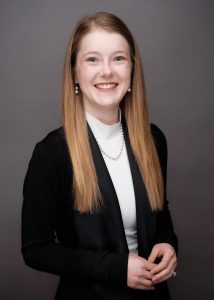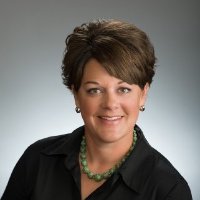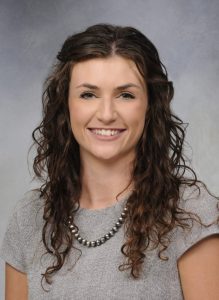|
|
|
|
|
|
|
|
|
|
|
|
|
|
|||||||||
|
|
|
|
|
|
|
|
|
|
|
|
|
|
|
|||||||||
|

Amanda Clasen- Community Vitality Agent
November 2023
The holiday season is upon us, have you started thinking about your Holiday Shopping? Believe it or not, Christmas is just a little over 5 weeks away and it will be here before we know it! Christmas is one of the most magical times of year and can often become the busiest time of year, making it easy to get caught up in the moment of gift buying! Planning ahead, setting a budget, and shopping local can help shoppers avoid over- spending while giving a little back to your community during the giving season!
There are many different ways to support small local businesses during the Holiday gift season. In 2010, American Express started the Small Business Saturday effort to help direct consumer’s dollars to local businesses. The nationwide holiday is held the Saturday after Thanksgiving. This year Small Business Saturday falls on November 25th. Some ideas to help you shop local this holiday season may include:
By purchasing even a few gifts off of your list can make a huge difference to your local town. Keeping your money local helps your local government receive more tax revenue resulting in better public services that you use all year long. Supporting local business that often donate to local charities and youth events, also allows those businesses to provide family and neighbors with employment opportunities.
Another important aspect of a money saving Holiday is your budget and the amount of money spent on gifting.
For more information, please contact me at [email protected] or 620-244-3826. To learn about additional programs we will be offering, visit Southwind.ksu.edu!

Interested in increasing your knowledge of nutrition, health, wellness, and food safety? If so, the Master Food Volunteer training is perfect for you! The Master Food Volunteer Program, which is modeled after the successful Master Gardener Program, provides a wide range of benefits. This training is being provided by the Southwind Extension District in collaboration with the Wildcat Extension District and the Marais des Cygnes Extension District. The majority of the training is completed online at your own pace, with three in-person labs. You’ll learn more about basic nutrition, meal planning, cooking techniques, seasonings and flavors, food preservation, food safety, and more.
Master Food Volunteers are people with interests in food, cooking, and nutrition who have gone through this training to take their expertise to a higher level in order to be able to give back to the community by volunteering at educational programs. Examples of programs supported by trained Master Food Volunteers in recent years have included summer youth cooking classes in Fort Scott and Bronson, as well as a breadmaking workshop in Fort Scott. If you are interested in joining this group, apply by December 1st. The training will take place in January and February 2024. Visit bit.ly/southwindmfv to learn more and find the application. Please note there is a $120 fee to complete the training.
For more information, contact Southwind District Nutrition, Food and Health Agent Clara (Wicoff) Misenhelter at (620) 365-2242 or [email protected].
Kansas State University Agricultural Experiment Station and Cooperative Extension Service
K-State Research and Extension is an equal opportunity provider and employer.

Nothing is more important to success in the garden good soil. Time spent fertilizing, watering and tending to plants is necessary, but this time is almost a waste if the soil you’re working with is not in good condition. Fall is an excellent time to step back and analyze how well your garden performed during the summer, and to make improvements to the soil.
Soil is formed when rock is broken down by climate and vegetation over a period of time. Soil is nothing more than weathered rock fragments and decaying remains of plants and animals.
Most soils have three distinct layers – surface, subsoil and bottom. The surface layer is a coarse layer containing more organic matter than the other soil layers and the layer that people pay the greatest attention to. This layer is the most fertile and has the greatest concentration of plant roots. Plants obtain much of their nutrients and water from the surface soil.
The subsoil layer is finer and firmer than the surface soil and serves as support for the surface layer. The subsoil layer is a storage space for water and nutrients for plants, a temperature regulator of the soil and supplies air for the roots of plants. The bottom layer is decomposed rock. It is not hard like rock, but may show the form or structure of the original rocks.
Soil texture refers to the proportional amount of sand, silt and clay in a soil. Texture and soil structure affect the moisture holding capacity of soil, permeability, capacity to hold and furnish nutrients, tillage operations and erosion.
Our soils in the southeastern part of Kansas have a high clay content to it. The clay in the soil is what makes the soil stick to your shoes when the soil is wet. Many refer to our soil as “gumbo.”
One way to address a heavy clay soil and to improve the soil texture is to add organic matter. Organic matter includes such items as manure, leaves, and grass clippings that have been composted. Earthworms, insects, bacteria and fungi use the organic matter as food, breaking it down into humus. Through this process, materials are made available for use by growing plants. In a heavy clay soil, the organic matter allows water to move more freely and loosens the tight clay, which makes the soil easier to work.
Organic material can be direct applied to gardens and flowerbeds this time of year and allowed to compost directly in the soil. Add two to four inches of organic material and till into the soil. If the soil is dry, apply water to begin the decomposition process. After about two weeks you can repeat the process with another application of organic material. The organic material will decompose over the winter and soil will be ready for spring planting.
Sand is sometimes suggested as an amendment material for clay soils. However, there is a good reason to be cautious about using sand. For sand to be effective at breaking up a clay soil, sand grains must touch one another so there is pore space between grains that can hold air and water. If the grains don’t touch, the clay fills in the void between sand particles leaving no room for pores. This is the same principle used to make concrete and the result is somewhat the same. In other words – do not use sand!
Before doing any amendments to the soil, I recommend doing a soil test through the Extension office. For more information on how to take a soil sample, please give me a call.
K-State Research and Extension is an equal opportunity provider and employer.

We’ve all seen the Medicare ads that will make you wonder if you are missing out on important benefits. This is not necessarily the case and there is no need to ponder this concern alone! Trained and unbiased Senior Health Insurance Counselors are available to visit with you and see what works best for your situation.
Medicare Annual Election Period, running from October 15th-December 7th, is a great time to ask your questions! Call 620-244-3826 to schedule an appointment. Until then, here are some Medicare basics:
Medicare is a federal health insurance program that can cover:
Medicare Part A is hospital insurance that covers:
Medicare Part B is medical insurance that covers:
Medicare Advantage Plans are also called Medicare Part C:
Medicare Part D is Prescription Drug Coverage:
Medicare Supplement Insurance (Medigap):
Medicare Savings Program (MSP)
Part D Extra Help:
For more information, contact Tara Solomon-Smith, [email protected], or call 620-244-3826.
# # #
Kansas State University Agricultural Experiment Station and Cooperative Extension Service
K-State Research and Extension is an equal opportunity provider and employer. Issued in furtherance of Cooperative Extension work, acts of May 8 and June 30, 1914, in cooperation with the U.S. Department of Agriculture, Director of K-State Research and Extension, Kansas State University, County Extension Councils, Extension Districts.

By Clara Misenhelter
Southwind Extension District
The holidays are right around the corner! Many families, mine included, have holiday traditions centered around foods that they only get to enjoy a few times each year. These traditions are important and should be cherished without guilt. However, if you are wondering how you can make your traditional holiday recipes healthier, there are several steps you can take.
First, recognize that many holiday favorites (like pumpkin pie) start with a healthy first ingredient. Think of this vegetable or fruit as the “star” ingredient. Next, find ways to “focus on the stars” so that you can reduce the large amounts of fats and sugar typically found in traditional holiday recipes. For example, try using fat-free evaporated milk when making your pumpkin pie filling instead of using regular evaporated milk. Other ways you can “focus on the stars” this holiday season include switching from a traditional green bean casserole to a green bean sauté, from traditional mashed potatoes to yogurt mashed potatoes, from a traditional pumpkin pie to a crustless pumpkin pie, or from a traditional apple pie to slow cooker baked apples. Again, remember that it is important to make changes based upon what is important to your family traditions and culture. You may have specific recipes that are important for your family to enjoy as they are without making any modifications.
To learn more, consider attending one of the “Healthy Cooking for the Holidays” programs I will be hosting in November. These programs are free, but please call 620-365-2242 to RSVP for the location you prefer out of the following options:
This article was adapted from a fact sheet originally published by retired family and consumer sciences agent Barbara Ames. This fact sheet can be found online at bit.ly/focusonthestars. For more information, please contact me at [email protected] or 620-365-2242. To learn about additional programs we will be offering, visit bit.ly/southwindnews to sign up for the “Wellness For You and Community, Too!” e-newsletter published monthly by the Southwind District.
Kansas State University Agricultural Experiment Station and Cooperative Extension Service
K-State Research and Extension is an equal opportunity provider and employer.

The Science of Happiness
What does science say about happiness? Is there any research on what creates happiness? Thanks to recent studies, we now know how to define and create happiness in our lives. In a recent webinar sponsored by Wyandotte County K-State Research and Extension, certified nurse leader and health coach Michelle Lane explained the facts of happiness.
Happiness can be defined as a combination of how satisfied you are with your life plus how good you feel on a day-to-day basis. Research tells us that 10% of happiness is determined by your circumstances, 50% is biologically determined, and 40% is controlled by your thoughts, actions, and behaviors. Contrary to what many people think, happiness is not about having the best or newest things or having lots of money.
Your outlook on life and the way you view the world around you play a big role in your level of happiness. Human brains are deeply intertwined with a mind-body connection, meaning that our thoughts and feelings directly impact our overall health. Happy people are less likely to have cardiovascular disease, have higher immunity, heal faster, have a healthier diet, and live longer lives. With over 40 years of research from Johns Hopkins, we know that diseases progress quicker in people with a negative outlook. By choosing to be happy, you can add 7 ½ years to your life! Not only does it feel good to be happy, but it is also good for our health.
A large part of our mindset is linked to four major chemicals produced in our gut. When we are fetuses inside the womb, the brain and brainstem actually pinch off from the cells that make up the stomach. This is why gut health is so important and why the saying “You are what you eat” actually has some truth behind it. Dopamine, oxytocin, serotonin, and endorphins are the magical quartet of hormones that affect how we feel. When we accomplish something, dopamine is released into our bloodstream. Oxytocin is the love hormone and is triggered through social bonding, eye contact, and attentiveness. Giving hugs is a great way to release this hormone for a feel-good buzz. Serotonin flows when you feel important or significant. Gratitude is a great way to recognize someone or praise them, which increases serotonin. UV rays also help create serotonin so getting a little bit of sun each day (20 min) can boost your mood. Finally, endorphins are released in response to pain and stress. They help relieve anxiety and depression. Strenuous exercise, spicy foods, and cold showers release lots of endorphins.
Besides a good diet, what can we do throughout our day to increase happiness? Establishing deep, nurturing relationships with others can create a feeling of belonging, fulfillment, and overall happiness. Feeling connected with others that we truly care about helps alleviate stress. Physical markers such as blood pressure or cholesterol have less to do with how long we live than the social interactions we have as we age. Isolation and loneliness have been proven to decrease life expectancy. Be intentional about new experiences, help others, be kind, and be grateful. Doing these things will create happiness that is long-lasting.
If you are interested in watching the webinar and learning more about this topic, it can be found on YouTube at https://bit.ly/KSREhappiness. For more information, contact Cassidy Lutz at [email protected] or by calling 620-625-8620.

The Southwind Extension District, along with the Bourbon County Conservation District, Kansas Department of Wildlife, and Kansas Bankers Association, will again be holding the Conservation Awards Program for 2023. This year, we will be giving awards in the following categories: Energy Conservation, Water Quality, Water Conservation, Soil Conservation, Windbreaks, and Wildlife Habitat.
The purpose of this program is to stimulate a greater interest in the conservation of the agricultural and natural resources of Kansas by giving recognition to the farmers and landowners who have made outstanding progress in practicing conservation on their farms. Public nominations can be made by any person in the county. They can be sent to the Southwind Extension office by November 10, 2023. Please visit http://www.agronomy.kstate.edu/extension, or contact Chad at the Southwind Extension Office in Fort Scott: 620-233-3720.

Amanda Clasen- Community Vitality Agent
October 2023
Crisp autumn air will make anyone want to be outside and enjoying the seasons changing. Spring and Fall are the most opportune times of the year to work on making your yard and community appearance more inviting. Fall allows preparation for winter months ahead while spring invites us out of our “hibernation” to prepare and enjoy the incoming spring months. Organizing a community cleanup is a great way for community members and neighbors to make a change and show pride in their local community while improving the physical appearances.
Hosting a community clean-up campaign also helps improve the health of the community by eliminating habitation for rodents and insects to live, provides an avenue for residents to become more involved and show visible results and will create a good impression on visitors and potential employers. Organizing your Clean up campaign into seven areas will help make your campaign a successful event.
K-State Community Specialist Nadine Sigle & Former Community PRIDE Program Coordinator Daniel Kahl offer the following advise on how to plan and organize a successful Community Clean up.
Find more information on conducting a Community Clean up in your community in “Conducting a Community Clean-up/Fix-up Campaign” publication from K-State Research & Extension found at http://bit.ly/1HU7Bcq, or contact Community Vitality Agent Amanda Clasen and [email protected] or any Southwind District Extension office. Make sure to join our Monthly e-newsletter for Health and Wellness at http://bit.ly/southwindnews
Starlite FCE Minutes
September,2023
The September meeting of the Starlite FCE was held at the Presbyterian Village Meeting Room. President Glenda Miller called the meeting to order. Joyce Allen led the club in reciting the Pledge of Allegiance and the Club Collect. Fourteen members and one guest were in attendance. The members reported that they had volunteered for eleven hours and had recycled 330 pounds.
Doris Ericson presented the Treasurers report. There was no council report. Glenda Miller recognized birthdays of Letha Johnson and Jackie Warren and announced that 911 baskets had been delivered.
Old Business consisted of Fall Follies, which will be held at the Bronson Community Center October 10th at 6:00. Eleven will be attending
New Business for September was planning for the Veterans Day bags for the American Legion, VFW and the Assisted Living facilities. Members are to bring snacks to the next meeting. Dues are also due in September, membership forms were distributed and returned to Doris. Doris Ericson announced that Wreaths Across America will be $17 this year. Joyce Allen moved that we purchase one, Betty Johnson seconded the motion, motion carried.
Letha Johnson moved that the meeting be adjourned, Doris Ericson seconded the motion, meeting adjourned.
After the meeting Claudia Wheeler presented the program of Grandparents raising grandchildren with members discussing their grandparenting experiences.
Refreshment of Fruit Pizza, nuts and M&Ms, mints and water were provided by Claudia Wheeler and Ida Ford.

The secret to living healthier, happier and longer lives has been out for many years now. Decades-long research from explorer Dan Buettner reports areas of the world where people seemed to be living longer and healthier and termed the locations ‘Blue Zones’. His recent Netflix documentary gives a visual and is now trending as a top streaming pick.
The five original Blue Zones are in Italy, Costa Rica, Greece, Japan and California, with Singapore being added later.
So why do people in these areas live so long and so well? The answer is simple — lifestyle. Their lifestyle includes a healthful diet, daily exercise, and a low-stress style of living that focuses on family, purpose, religion, and meaning. Here are a few lifestyle aspects that Buettner has found in his research.
Move naturally. If you are like me and do not like to go to the gym, you might be inspired by this one. Those in the Blue Zones build movement naturally into their day by walking to the store, gardening, or sitting on the floor instead of lounging in a chair.
Downshift. This relates to stress relief. Here there is a lot of talk about mindfulness and reducing stress but in Blue Zones it seems to be a natural practice. For example, in Okinawa, Japan, people take a minute every day to remember their ancestors. In Loma Linda, California, people take time to pray every day. In Greece, it’s an afternoon nap. In Italy, a Happy Hour.
Plant Slant and the 80% Rule. Blue Zone diets include meat, however it’s about a tenth of the amount Americans eat. Incorporate more plant-based foods, such as beans and nuts and green leafy vegetables and try ways to add herbs for flavoring. Another principle allows your stomach to catch up to your brain by eating only until your 80% full.
Build that Social Network with Purpose. Blue zones have similar prioritization of family and community. A network of support and a sense of belonging is good for the body and the soul. This has often been found in a faith-based community, but it doesn’t have to be. It can be accomplished within an interest group or through volunteer project work. We do know that habits are often contagious so surround yourself with others that inspire you to live a healthier life style!
There’s no quick fix or one thing that will create this all-encompassing health change. It requires dozens of small steps that can move us toward a healthier life. We can start this within our home in small increments to improve connections, increase movement, and decrease stress.
For more information, contact Tara Solomon-Smith, [email protected], or call 620-244-3826.
# # #
Kansas State University Agricultural Experiment Station and Cooperative Extension Service
K-State Research and Extension is an equal opportunity provider and employer. Issued in furtherance of Cooperative Extension work, acts of May 8 and June 30, 1914, in cooperation with the U.S. Department of Agriculture, Director of K-State Research and Extension, Kansas State University, County Extension Councils, Extension Districts.